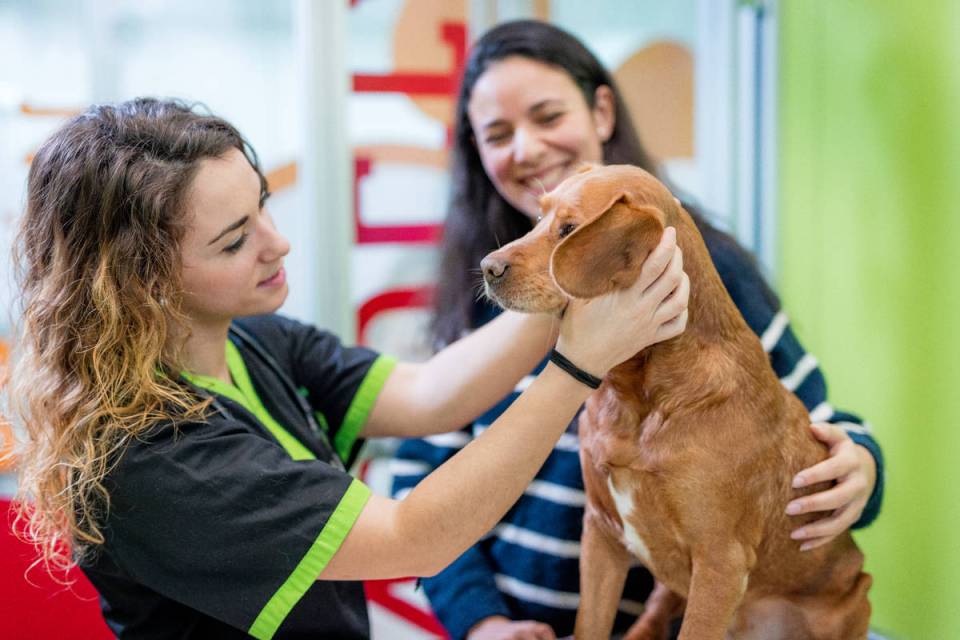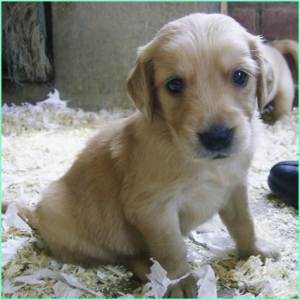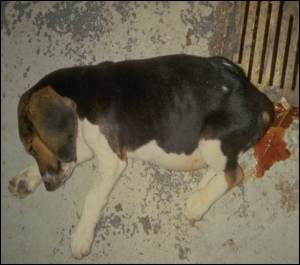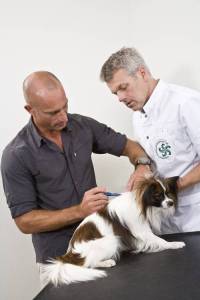
Canine Parvovirosis
A page about canine parvovirus infection describing cause, clinical signs, diagnosis and control.

Introduction
Canine parvovirus causes a highly infectious viral disease of dogs which can cause mild signs in some individuals, but may be fatal in others. The disease first emerged as an epidemic in the 1970s, killing thousands of dogs before an effective vaccine became available. Although no longer present in epidemic proportions, parvovirus is still relatively common in non-vaccinated dogs, and veterinary practitioners throughout the country regularly report outbreaks of the disease. Facilities where large numbers of dogs are kept and especially where there is a continuously changing population e.g. pounds and shelters, are constantly challenged to keep this disease under control.

Aetiology
The cause of canine parvovirus disease is a highly contagious DNA-containing virus. There are currently three types prevalent in Ireland, namely CPV-2a, CPV-2b and CPV-2c. CPV-2d has recently emerged in some countries. Happily CPV-2 vaccines still cross protect against these new variants.Some strains of the virus may be more pathogenic than others.

Epidemiology
Dogs less than one year of age are most commonly affected. However, those animals that have not been vaccinated or have weakened immune systems are also susceptible. There has been some suggestion that “black and tan” breed puppies are more susceptible to parvovirosis, though evidence is relatively sparse. Studies from America suggest that these breeds are over-represented in veterinary hospital admissions compared to other breeds. Canine parvovirus affects all breeds of domesticated dog, as well as wild dogs (including bush-dogs, coyotes, maned wolves) and the virus may also be transmitted to cats, ferrets and mink.
Canine parvovirus is a small, but extremely hardy virus that can survive in the environment for long periods of time – months or even years – and is resistant to many household disinfectants.. The main source of infection is the faeces of infected dogs; the virus can also spread on shoes and clothing and on the coat and pads of dogs. The virus is transmitted through the mouth or nose from faeces. The incubation period of CPV is generally 5-7 days.

Clinical Signs
Signs usually consist of depression, severe vomiting, refusal of food and water, abdominal pain and profuse smelly, bloody diarrhoea. This can result in rapid and severe dehydration, and ultimately death. Individuals normally have severe enteritis, however occasionally, animals may only have mild symptoms.
Photo courtesy of Dr. Hal Thomson, Canine Infectious Diseases Research Unit, University of Glasgow Veterinary School.
Diagnosis
Diagnosis can be based on:
- Clinical signs – Fever, depression, vomiting and subsequently diarrhoea are highly suggestive of disease (photo courtesy of Dr. Hal Thomson, Canine Infectious Diseases Research Unit, University of Glasgow Veterinary School). While these signs are fairly distinctive for this disease they do not provide a definitive diagnosis
- A blood test (haematology) will also show a severe decrease in the white blood cell numbers
- Viral antigen can be detected by PCR or virus isolation – This test can identify virus in acutely infected animals. The virus is shed in mainly in faeces.
- Serology – An test for antibodies is available. This identifies development of immunity in recovered animals. Animals may die before antibodies develop however.
- Post mortem examination – Unfortunately many animals with parvo die. Characteristic lesions and histopathology are present in a variety of tissues and provide a definitive diagnosis.

Control
It is essential to vaccinate your dog according to your vet’s recommendations. Pups that are born to vaccinated dams usually have antibodies from their mothers (maternal antibodies) that protect them against infection during the first few weeks of their lives. The pup is in danger after the level of maternal antibodies declines and that is when it should be vaccinated.
The “7 in one” vaccine contains antigens against parvo as well as against some other serious diseases. For further information on disease and vaccination please click here.
There is no specific treatment for parvovirus infection, although supportive therapy in the form of intravenous fluids are often given to correct the fluid loss due to vomiting and diarrhoea. The best form of protection against this virus is through vaccination. You’ll be pleased to know that there are some vaccines that offer a duration of immunity of three years. However, it is advisable to administer the first annual booster before moving to the three-yearly cycle for these vaccines. Vaccines may only be prescribed by your veterinary practitioner from whom advice must be sought.
Some of the vaccines on the market reduce clinical signs and mortality due to parvovirus, but they do not prevent shedding after infection occurs – this means the animal will still excrete the virus into the environment. Unfortunately, canine parvovirus is very stable in the environment, so any animal which sheds the virus not only contaminates the environment, but poses a risk to other animals as well.
Disinfection with sodium hypochlorite, formalin, parvocide, etc. can reduce virus dose but will not eliminate virus from soft furnishings. Since bleach and formalin are inactivated by organic material thorough cleaning is vital for the success of disinfection. It is important to realise that infection is maintained in premises by subclinical infection of susceptible animals which become infected, produce huge amounts of virus and recover, thus part of parvovirus prevention is to stop breeding for a year. No susceptible animals should be introduced for at least a year, any new animals should have had a full course of vaccination before being introduced.
